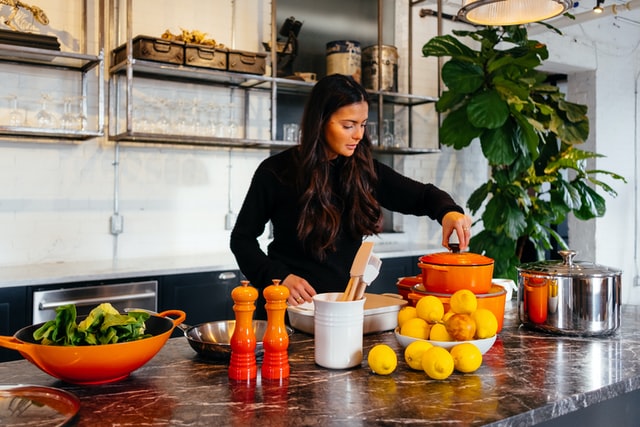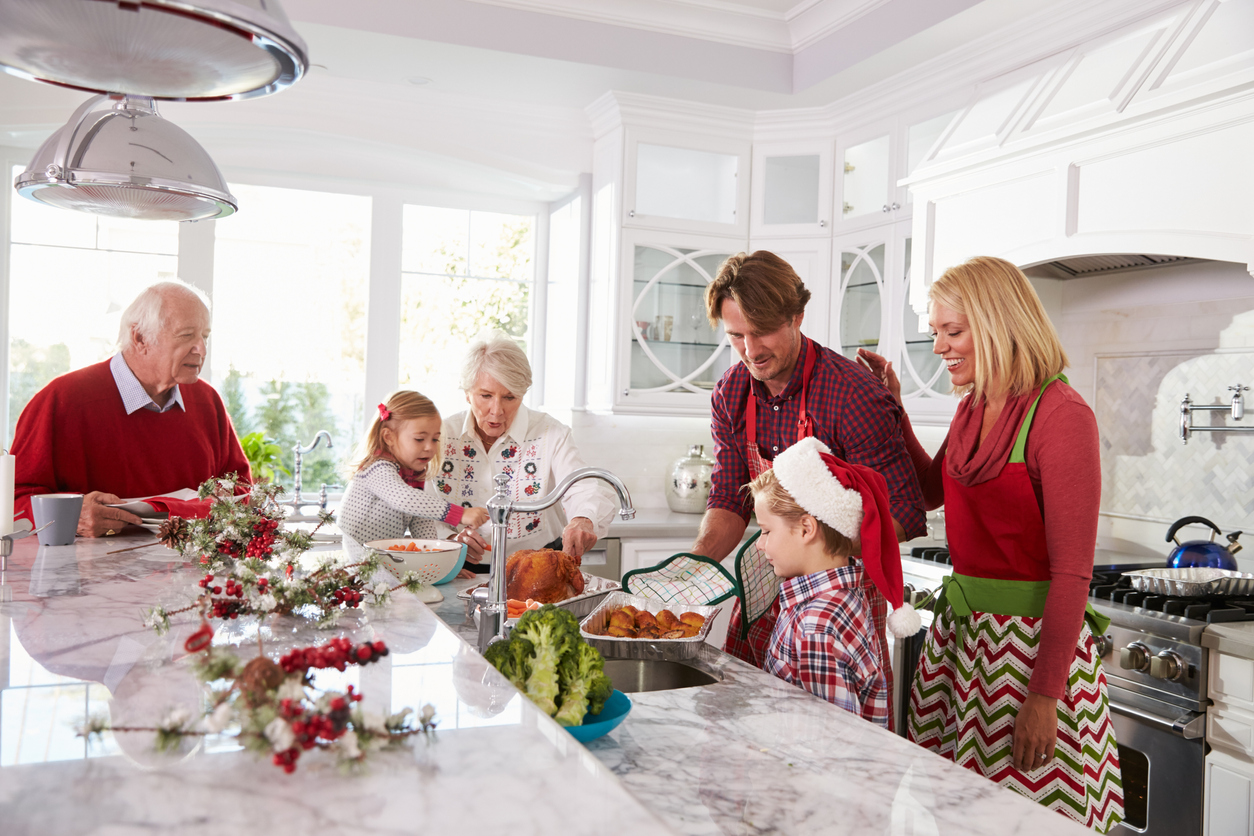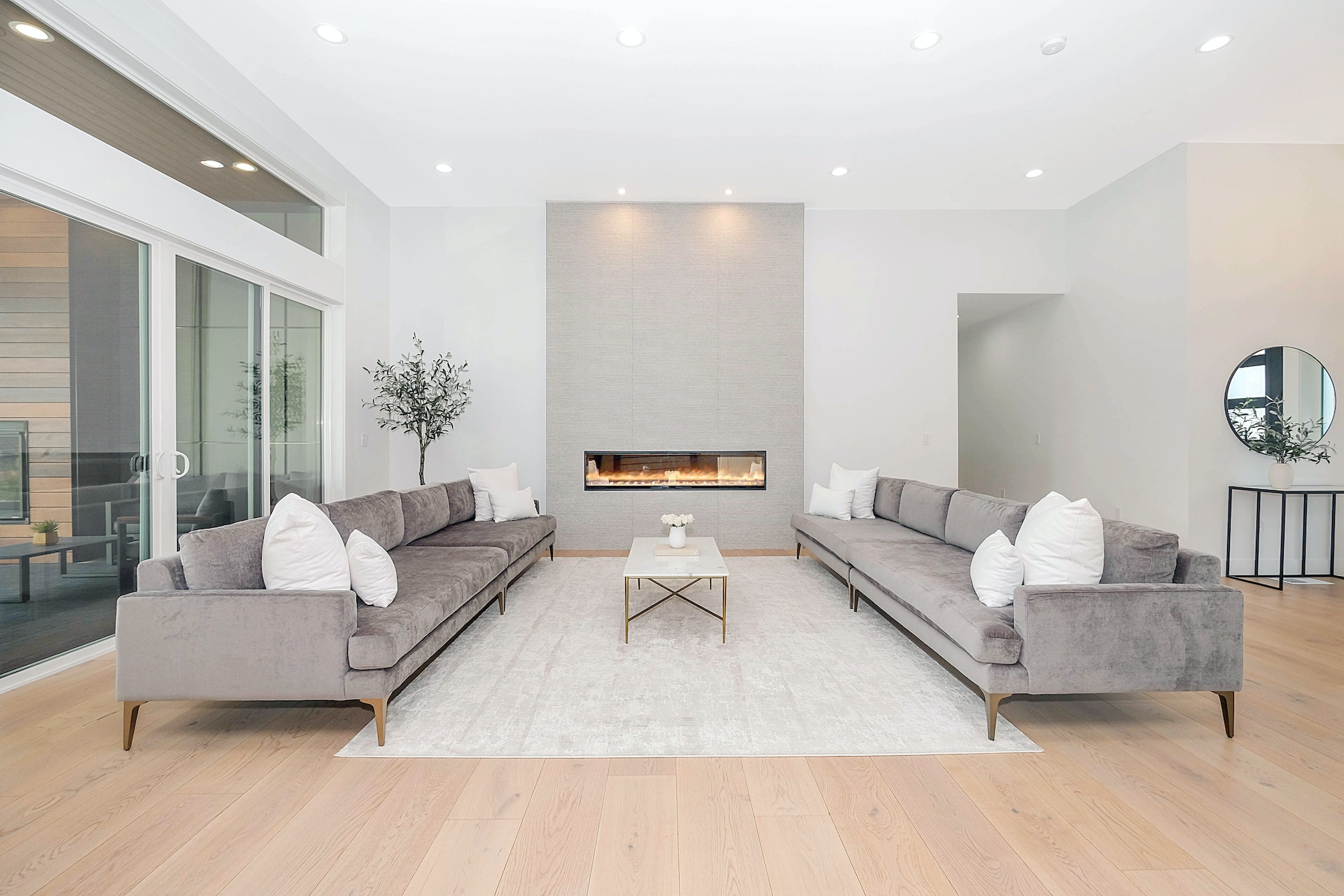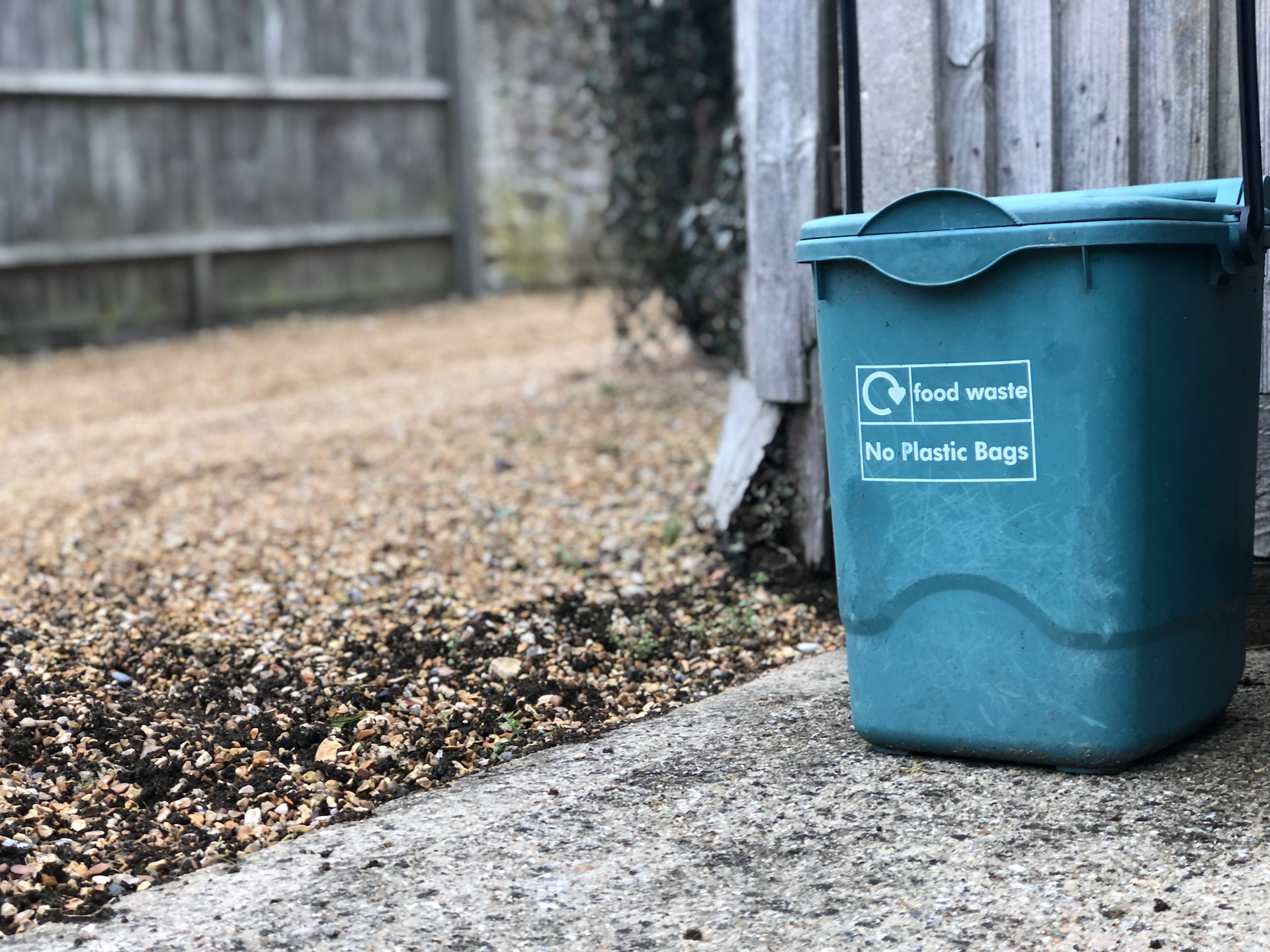More people than ever are choosing to have their food delivered directly to their doorstep instead of sitting down and eating inside a restaurant. Thanks to a major surge in food delivery demand, “ghost kitchens” are starting to pop up all over the country. A ghost kitchen is a place where a small business or professional chef makes food in one location without a formal dining area. These kitchens don’t provide customers with a physical place to visit and eat. Instead, the food is prepared remotely, then picked up and delivered to customers on-demand. Cloud kitchens are somewhat similar; however, these kitchens have several brands or types of food all made together under one roof, while a ghost kitchen is just one brand and menu. If you’re thinking of going solo and starting your own ghost kitchen at home, read on for some tips and information to help set you up for success.
The Many Benefits of Opening Your Own Ghost Kitchen

If you love to cook, there are many amazing benefits to opening your own ghost kitchen. Here are just some of the perks to starting your successful ghost kitchen business plan.
Less Space is Required
Most delivery-only restaurants use a commercial kitchen to prepare their food, but there’s no seating area. This means you’ll need less square footage and space to cook and prepare the meals you sell. Starting a ghost kitchen eliminates the need for an entire restaurant, which will reduce the overhead cost of renting and maintaining a whole building that must accommodate dine-in customers.
You’ll Be Able to Capitalize on High Demand
The demand for food delivery has been increasing long before the pandemic began. Customers like to have their favorite foods brought right to their door at any hour of the day and at the touch of a button. Because of this surge in demand, ghost kitchen profits are soaring. It’s a great opportunity for you to get in from the ground up so you can cash in on this popular niche and make a profit.
Ghost Kitchens Produce Less Food Waste
Almost 85 percent of food produced from restaurants is thrown away, either by the customer or the kitchen itself. Having a ghost kitchen lets you keep inventory to a minimum, focusing on just a few menu items and a smaller variety of foods. You can also learn to make dishes based on more precise measurements that reduce food waste overall.
A Cost-Saving Business Plan
Running a ghost kitchen means there’s a lot less overhead to contend with. You won’t need to pay front-of-the-house staff or waiters and waitresses. Not only will your staff be smaller, but you won’t need to pay for a massive commercial kitchen along with public restrooms and a dine-in area. This gives you a lot more financial freedom and flexibility. And the best part is that you can start your ghost kitchen at home, saving you even more money.
There’s Less Risk
Starting your own restaurant is rewarding, but it’s also a high-risk business model. As a ghost kitchen owner, you can easily adapt your restaurant menu to meet current demands without changing your name or public menu, which can confuse customers. If you make the food from your own home, there’s even less risk since you won’t lose all of the costs associated with having a traditional brick-and-mortar building.
Kitchen Adaptation: Turning Your Own Kitchen into a Ghost Kitchen
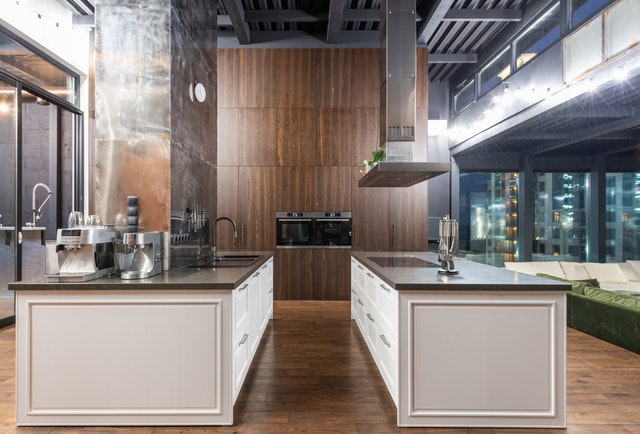
If you think starting this type of business is right for you, here are some tips to run a successful ghost kitchen.
Create the Optimum Cooking Space
Since you’ll be making a lot of food frequently, you’ll need plenty of room to cook and prepare your menu items. An open floor plan is ideal for the best mobility, so you may need to consider remodeling your kitchen to make more room. If you do decide to remodel, set your new kitchen up by creating separate areas based on each function. Maximize your equipment by choosing items that can serve several purposes in one, such as a mixer that you can use for making dough, soup, and salsa. Record the measurements of all the equipment you’ll need to prep, display, store, and refrigerate your food. This will help you determine where each item will go and how much room you need to use it efficiently. You’ll also need to decide whether you plan to have a walk-in or freestanding fridge and freezer. Which one you choose depends on how much square footage you have to work with.
Find and Use Professional Equipment
While professional kitchen equipment costs more, it’s also a wise investment since it’s designed to handle the rigors of heavy-duty use. Put the bulk of your money into the most important items. This should include a range and stovetop, good ventilation, refrigeration and freezer units, mixers, heavy-duty cookware, quality cooking tools, food processors, and a large sink or industrial dishwasher. Make a list and write down the most important items first. This will help you prioritize and ensure that you’re only spending money on equipment that you’ll actually use. Remember, you can always upgrade or purchase more equipment as your business grows.
Adapt Your Space
Remember that you’re going to need to adapt your space at home to accommodate for storing kitchen equipment, stocking food, and packaging your meals for delivery. Consider using open shelving since it provides easy access, and it’s also easier to clean. If you don’t have enough room for a massive fridge and freezer, you can always store your food separately in commercial storage space and then just bring it into the kitchen daily for preparation. This is also a great way to determine just how much food you really need to buy based on demand and how much you actually use per day, week, or month so you can keep an eye on inventory fluctuations.
Install the Right Sink
Kitchens are messy by nature, and they can become even messier in a commercial environment. Ensure that you install a large, deep sink with separate sections for washing and soaking cookware, dishes, and cooking utensils. The larger and deeper the sink is, the easier it will be to clean everything. You should also install a pull-down sprayer that makes removing gunk and stuck-on food easier. Set up a separate area for drying your dishes and cookware so that it’s constantly in rotation.
Don’t Forget Maintenance
Your kitchen equipment will inevitably break down or need repair at some point. If your equipment isn’t working, production will come to a standstill, leading to lost profits and unhappy customers. Make it easier for repairers or your maintenance team to access everything by creating a wide, open space for better access. You can also find some equipment with wheels to move it around as needed. If your repair team can’t get to your equipment, they won’t be able to fix it. Consider designing a modular kitchen so that the equipment can be broken down and moved for repairs.
With a kitchen appliance home warranty, you can know that if any of your covered appliances break down due to normal wear and tear, the cost of repairs or replacements will be covered. This can help you avoid the potentially high cost of repairing or replacing a major kitchen appliance out of pocket.
Remember Proper Air Ventilation
Good ventilation is a must-have for a kitchen, whether it’s a small home kitchen or a large commercial setting. Proper ventilation will promote better indoor air quality and circulation while reducing odors and smoke. Install a heavy-duty range fan and turn it on whenever your team starts cooking, not halfway through the process. Be sure to change the range hood filter often so that it’s doing its job. Some extra fans and air purifiers can also be helpful to keep the kitchen air cool and clean. If you need help installing a range fan or air purifier system, consider hiring a handyman to help you.
Tips For Opening Your Ghost Kitchen Business
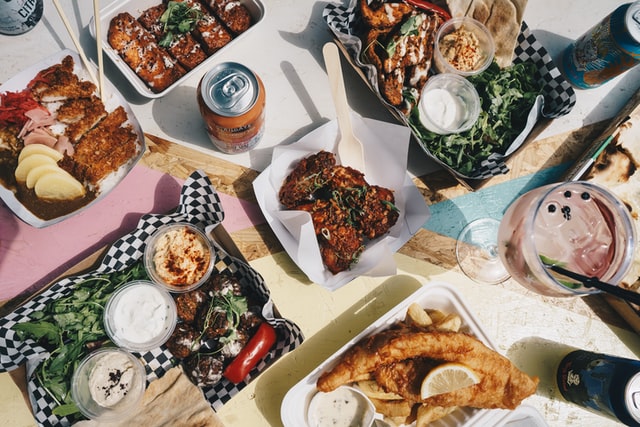
Now that you know more about the benefits and kitchen adaptation stages, it’s time to look at some steps to get your ghost kitchen business plan started.
Choose Your Niche and Menu
Decide what type of food you want to sell, which will become your specific niche. Do some market research to find out what the most popular delivery foods are currently in your area. Come up with food items with a unique spin rather than traditional items like pizza and burgers. Optimize your food for delivery by cooking items in bulk that can easily be separated and delivered to individual customers. Make sure you create a menu that’s aligned with your brand so that you’re easily recognizable.
Come up with a Business Plan
All successful businesses have a strategic plan in place before they launch. Think about your menu pricing strategy and how you can make the most and best food without spending too much by buying in bulk and sourcing from quality suppliers at a discount. Optimize your goals in terms of volume and profit in advance. Choose a delivery method that works for you, and don’t forget to include labor costs as part of your overall plan. Keep costs like food packaging and delivery fees in mind. since these will affect your bottom line. If you choose in-house delivery, it will cost less, but you’ll also be responsible for managing your drivers. Delivery apps charge a fee, but they also help make the process easier and seamless. Finally, understanding your potential customers’ behaviors, interests, demographics, priorities, and other characteristics through market segmentation is crucial.
Create a Good Marketing Plan
Focus on your marketing strategy to reach as many customers as possible. Start with a creative, eye-catching menu design and packaging. In order to build a virtual brand, you’ll need to develop a good website and have an engaging presence on social media. Make sure your website includes the menu, prices, and a link to the delivery app or a way to contact you directly to place an order. The secret to your website’s structure will be in its templates. There are more than 5,000 free templates in WordPress you can choose from.
Don’t forget to incorporate other marketing strategies like mobile and email marketing, and marketing videos. Regular emails and social media engagement are excellent ways to increase customer loyalty. Hire a professional food photographer to capture your best menu items on film so that your dishes look enticing.
Know the Current Food Safety Laws and Regulations
Although you won’t have a traditional restaurant, you’ll still need to follow all of the latest food safety laws and regulations. Ensure you’re getting the proper permits, including food handling, preparation, and foodservice. While you won’t have to worry about building occupancy permits, you’ll still need to make sure that you’re following current labor and employment laws. Be sure to secure a good liability insurance plan if there’s a fire or someone gets injured while on the job. Always provide proper safety gear and ensure everyone follows the proper food handling and sanitation methods. The rules regarding permits and regulations may vary depending on where you live.
Create a Distribution Strategy
How you deliver your food to customers is part of your ghost kitchen distribution strategy. You can offer direct or indirect customer pick-up where you utilize in-house delivery drivers and staff. Another way to distribute your food is through a third-party delivery app. These apps will send their own drivers to pick up and deliver your food whenever a customer places an order. Sit down and go over the pros and cons of all methods to help you determine which one will work best. Depending on where you are, the strategy will vary based on how easy it is to get food to customers. Most ghost kitchens avoid offering pickup since it can complicate the process, and you’ll also need to have a parking space.
Use the Right Technology
The type of technology you implement will help you streamline your business. Mobile apps and online ordering platforms are the most popular options and make it easy for customers to place their orders virtually without calling. Integrate some social media marketing strategies to improve customer outreach and engagement. You’ll also need some restaurant and food business software such as a POS system to process payments and place orders through a computer system. The POS system should integrate with your website or app to make orders, dispatch deliveries, and retain customers streamlined. A kitchen display system is also a great way to help your staff view and manage orders as they come in. Software that helps you forecast sales and keep track of inventory can also be helpful to improve your bottom line.
Once your company is flourishing and expanding, you will need a fantastic software developer team in order to keep up with the upscaling. This will allow you to concentrate on your expansion efforts rather than being bogged down by technical issues.
If you’re passionate about cooking, consider the ghost kitchen business model. It’s a fun and easy way to make delicious food that you can deliver directly to your customers without the excess overhead. Give the idea of a ghost kitchen a try at home and watch your passion flourish and thrive.
While most businesses aim for sustainability, startups want to expand as quickly as possible. You must alter your thinking in order to do this. The startup mindset rejects established practices. After you do, your ability to quickly flood the market with your goods will increase.
